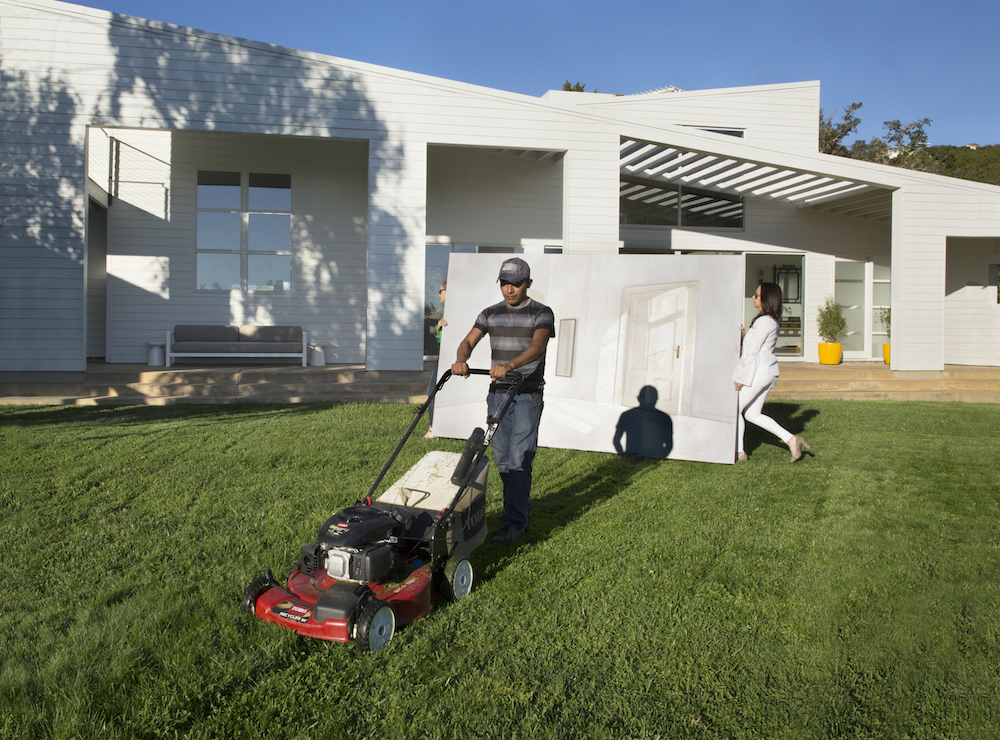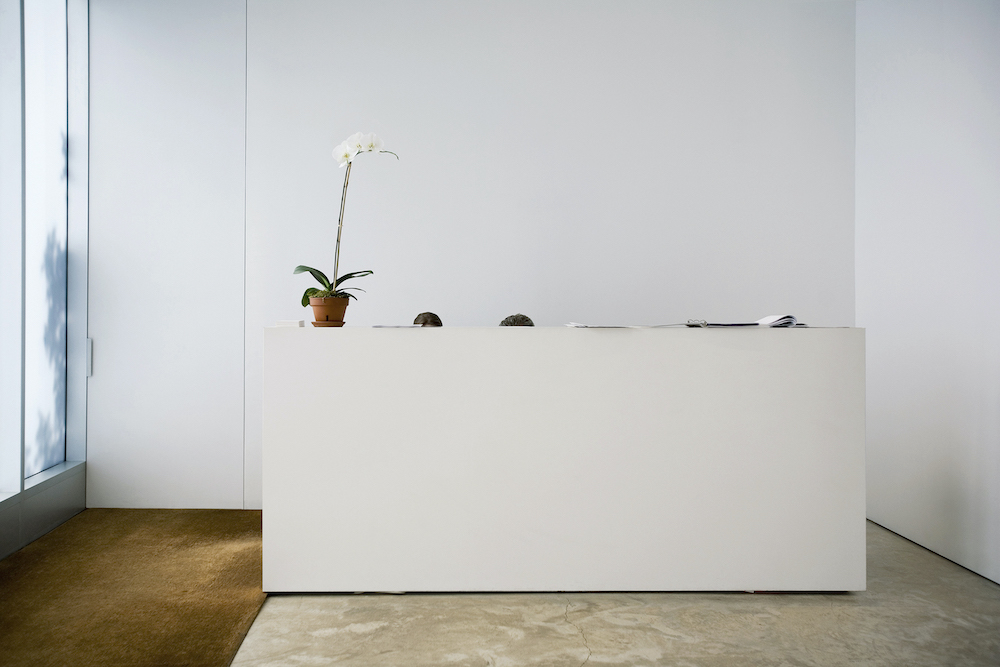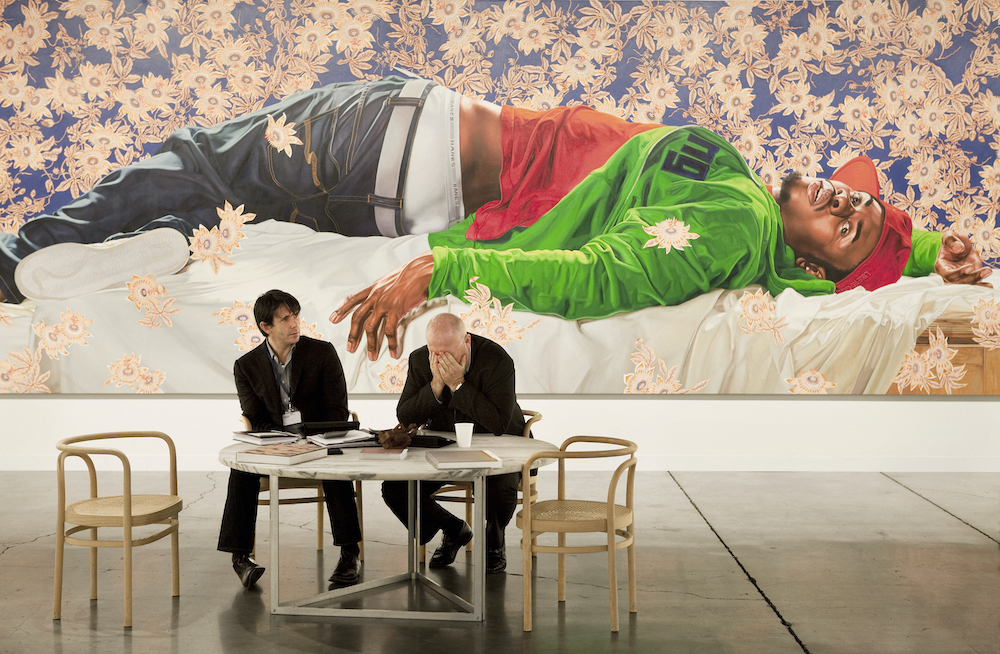Even when photographers are most concerned with mirroring reality, they are still haunted by tacit imperatives of taste and conscience.
—Susan Sontag, “On Photography”
Photographer Andy Freeberg has become something of an inadvertent cultural sociologist. Born in New York City and currently residing in Northern California, he began his professional career as a photojournalist working for publications such as Rolling Stone, Time, The Village Voice and Fortune, photographing the likes of Patti Smith, the Rolling Stones, Miles Davis, Liberace and many political figures. In 2007, he shifted his lens to capture the more circumscribed realm of art-world environs—it was something of a hybrid move to fine-art documentarian.
“When I began doing the color art-world photographs, I was looking at Bernd and Hilla Becher’s influence on Andreas Gursky, Thomas Struth, and Candida Hofer. I liked the German typology idea but wanted to add a humanistic touch and some American humor to that style,” said Freeberg at his San Francisco opening last March,
In the 2007 series, “Sentry,” Freeberg turned his attention to New York’s Chelsea commercial galleries: those white-walled sanctum sanctorums with their often intimidating Modernist interiors. The formal, nearly identical images depict tableaux of gallery staff seated behind imperious desks that obfuscate their identities. These are a different species of gatekeepers. Cheim and Read is one of several pictures in this mordant series of officious yet emotionally inert scenes.
Freeberg’s 2008 series, “Guardians,” is a complete visual detour. Here he captures Russian babushkas who, for a small government stipend, sit beside historic paintings at Moscow’s State Museums. The saturated, operatic images cast the sitters as willing protectors of a grand cultural chronicle. Michelangelo’s Moses and the Dying Slave, Pushkin Museum (2009), pictures an imperious woman, arms crossed, guarding her charge with implacable resolve.

Tiburon House artist: Edite Grinberga, 2018. Courtesy of the artist.
In a contrasting juxtaposition, his next series, “Art Fare” (2009) captures the art consiglieri at work—fully exposed, lobbying and selling pricey art at a public trade show. To most of the public, it’s an obtuse and murky place, surrounded by the ambiguities of elitism, negotiation and commerce. Freeberg explains, “Gallery owners and their staff are usually hidden behind large entry desks and closed office doors. But at the major art fairs I’ve visited, like New York’s Armory Show and Art Basel in Miami and Switzerland, they’re in plain view in their booths. As if on stage, you can see art dealers meeting with collectors, selling and negotiating, talking on cell phones, working on laptops. I found the lighting, costumes and set design excellent for photographing these living dioramas, where the art world plays itself.” One photograph, Sean Kelly, Art Basel Miami Beach, 2010 artist: Kehinde Wiley depicts Wiley’s arresting work foregrounded by enervated dealers—the art business can be a bit of a waiting game.
Initiated in 2017, Freeberg’s most recent and somewhat cheeky series, “Advisor,” was recently on view at San Francisco’s Jack Fischer Gallery. Freeberg tracked and photographed an art advisory group whose raison d’etre is satisfying the aesthetic requirements of the region’s budding tech nouveau riche. The advisors are called in to source, install and sell artworks on needy walls of the Bay Area’s contemporary palazzos—call it turn-key cultural services. But what, exactly, is a so-called art advisor? As it turns out, they have their own rather homogeneous membership association (the Association of Professional Art Advisors), which, according to their website, is dedicated to “emphasizing integrity, connoisseurship and education as the foundations of professional practice.”There’s more, but you get the picture; within that definition, there are myriad business-model permutations. (Disclosure: I do art advising on occasion.)
Freeberg attempts to maintain a dispassionate distance from this exclusive cohort, but it’s difficult for a viewer not to draw voyeuristic narratives from the images. Russian Hill, 2017 artist: Joseph Adolphe captures an art advisor at work, the young woman lugging a oversized painting of a bull into an elite hillside dwelling. Qualitative considerations of the chosen painting aside, the image seems a quintessential marker of the irrational financial exuberance that permeated the Bay Area economy, whose balloon was recently punctured further by a major bank failure.

Cheim & Read, 2007, from the series Sentry. Courtesy of the artist.
Freeberg doesn’t pose or “style” these scenes, yet Napa Pool, 2017 artist: Benjamin Anderson reads as surreal set-piece, with an advisor hauling a painting in the background while a youth languidly peruses on a technological device at poolside—an aloof yet illuminating domestic scene. Los Gatos Living Room, 2017 artist: Kim Simonson pictures the Finnish artist’s striking moss-green sculptures, plopped incongruously on the floor, awaiting the works’ final domestic placement.
The images are not as straightforward as they might seem, with the advisors as de-facto gatekeepers and attendant aides-de-camp to a niche demographic. But the picture that most jarringly captures this pecuniary arrangement is Tiburon House, 2018 artist: Edite Grinberga. In the foreground, a young Latino gardener is mowing a pristine lawn while the art advisor dutifully handles a painting in the background. It’s a somewhat disquieting mise en scène that confronts the socioeconomic rifts between client, advisor and gardener. In a state where wealth inequality is pervasive, the tableau is reminiscent of artist Jay Lynn Gomez’ paintings and public sculptural interventions of the “invisible,” largely Latino, labor force that tends to the bucolic gardens and homes of Beverly Hills. The purposeful and incisive color compositions bring the juxtapositions into stark relief—although the repeated tropes and scenes make for a numbing equivalence.
Freeberg’s photography wryly captures the confluence of money, art and the facility of convenience: the age-old reciprocity of commerce and culture, where the latter can scarcely survive without the former.


